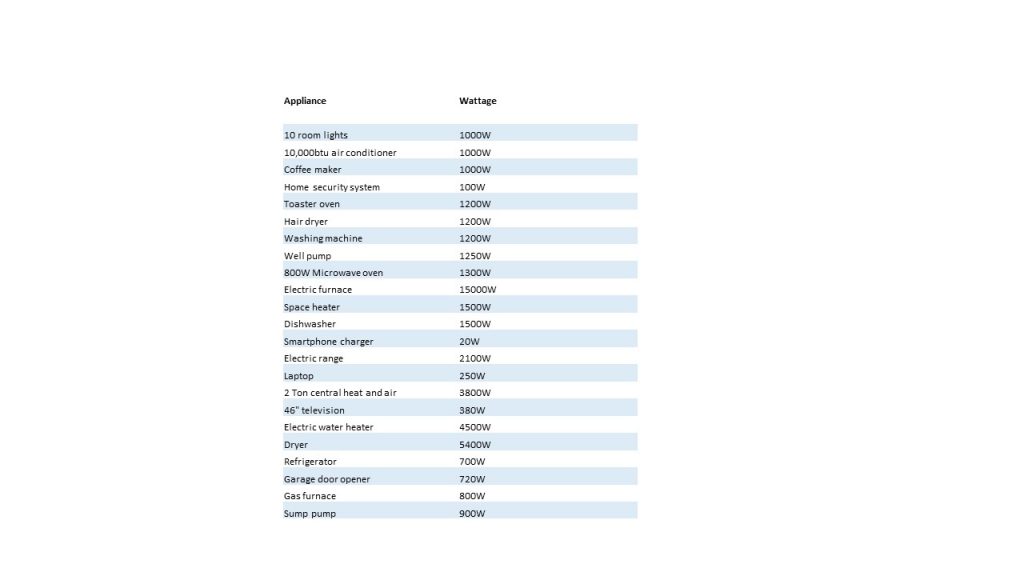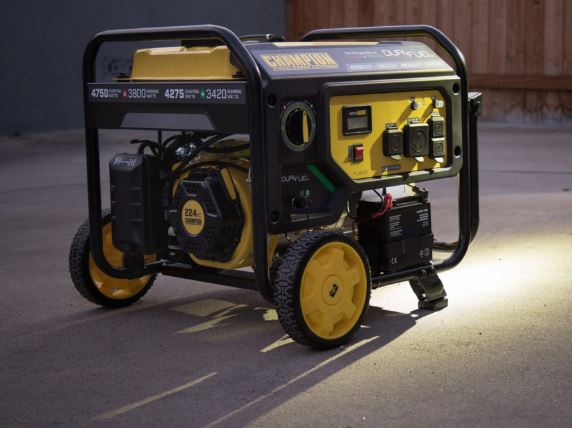Every year, most American homes lose electricity for a few hours. It’s sometimes just an annoyance. Other times, homeowners may lose food, endure frozen pipes, or even lose revenue if they work from home. Worse, it may endanger your family owing to the cold or medical demands. A generator can keep your power on so that you don’t have to deal with these outages.
There are many different types of generators available, with prices ranging from hundreds to thousands of dollars. Small generators may not be powerful enough, but larger home generators may require more fuel than you have on hand. It’s essential to have something that’s tailored to your personal requirements.
So, how big of a whole home generators do I need to keep my house running during a blackout? We’ll look at the different generator sizes in this post to help you choose the right size generator for your needs.
Generator Dimensions
Wattage is the unit of measurement for generators, not their size. Watts (W) or kilowatts(kw) are both measurements for electricity with 1kw equal to 1,000W.
A too small generator system will be quickly overloaded and will turn off automatically or burn out and become unusable. A generator that is too large will cost more and burn more fuel than needed.
The amount of watts, or generator size, you’ll need depends on what you’ll be running throughout the outage. The types of outages for which you wish to be prepared will largely decide this.
Choosing Your Wattage
Step 1: Make a list of all the gadgets you wish to keep running in the event of a power loss.
Step 2 is to make a list of their wattages. The watts is listed on their labels. Instead of looking for the output wattage, look for the consumption wattage and starting wattage. For example, a microwave oven rated at 800 watts may require 1300 watts to operate. For those momentary power spikes when large appliances, such as refrigerators and air conditioners, are cycling on, add a little more watts than you need.
If you can’t find the watts, you can calculate what size it by multiplying the voltage by the amperage.
Step 3: Add up all of the devices’ wattage.
The following chart depicts the usual watts for the most common appliances (real wattages may vary):

Based on the most frequent home needs, this table might help you figure out how many watts you’ll need to power a house with a generator.
The Different Types of Generators and the Wattages They Produce
Here’s a rundown of the many sorts of generators, their wattages, and what they’re best used for.
Don’t rely just on maximal power. A generator is only designed to run at maximum capacity for a short time (approximately 30 minutes). Take a look at rated power instead. This is the most common wattage that the generator will produce.
Up to 2,000 watts for recreational use
This is the lightest generator, weighing roughly 60 pounds. They are the most affordable. They’re quiet and simple to store and transport. You can boost the output by using additional generators. Most devices that use a standard plug can be powered by them.
They’re not powerful enough to run heavy appliances such as ac units. They are not capable of being linked to a circuit breaker. The more expensive versions are comparable to a mid-size portable generator, however they are less powerful for powering your home.
These are perfect if you only have a few small appliances to run, such as a cooker, TV, or coffee maker, and you rarely lose power.
Up to 3,500 watts in a mid-size portable
These are nevertheless lightweight and compact at 150 pounds, making them easy to handle and store. They’re silent and can power a variety of small gadgets.
This type of portable generator to power two or three prong 110-volt outlets, so they can’t run water pumps or huge heaters and air conditioners and definitely won’t power your whole home.
If you infrequently have power outages and need to run small items like a refrigerator, a tiny air conditioner, or a space heater, these are ideal.
Large portable with a power output of up to 7,500 watts
These under 7500 watt generator choices have a good capacity for their price, weighing roughly 300 pounds. Water pumps and other equipment can be powered by connecting them to your breaker panel.
Connecting them to your home’s breaker panel necessitates the purchase of additional hardware, which can be costly. They are noisier and use more fuel than inverters and other home generators. It must be kept dry and protected from the elements.
They’re great for power outages and when you need to run larger appliances like dryers, water pumps, air conditioners, and heaters.
Large inverter generator with a power rating of up to 7,500 watts
These provide constant power, which is ideal for electronics. They can power refrigerators, central heat and air units, and well pumps, among other things, and may be linked to your breaker panel. They’re quiet and economical to run.
Large inverters are costly, with a decent unit costing up to $4000, and they still require gasoline.
They’re perfect if you have frequent or occasional power outages and need to run larger equipment, such as air conditioners, heaters, and dryers.
Up to 20,000 watts of standby power for your home
These home backup generators can be permanent, and when there is a power loss, they automatically turn on via a transfer switch to give uninterrupted power. They have enough electricity to run the entire house (according to their wattage rating). They can be powered by either natural gas or propane.
For domestic use, this is usually the most expensive form of generator. They can cost tens of thousands of dollars and are not suitable for usage in flood-prone locations. Generator installation is usually done by professionals because cities usually require permits.
A standby generator is great for protracted power outages and locations hit by extreme weather like hurricanes and blizzards, when you need to run hardwired equipment like central heat and air conditioning, washing machines, clothes dryer, water heaters, and well pumps.
Summary
There is a generator that will meet your needs during a power loss, no matter what they are. We recommend purchasing the smallest generator that will meet your requirements using the sizing calculator above. If it’s too tiny, the generator will be overloaded. If it’s too big, you’ll end up paying more than necessary to purchase, run, store, and maintain it.
Always remember to put safety first, and never use the generator inside the house. Carbon monoxide (CO) is a deadly, odorless, and colorless gas produced by generators that kills thousands of people each year. Generators should be kept at least 20 feet away from your home.

